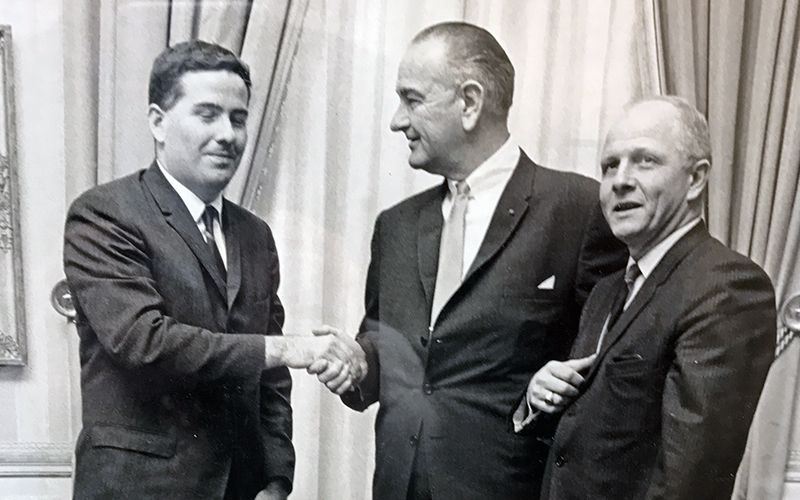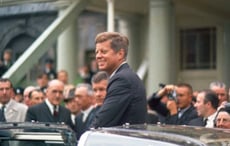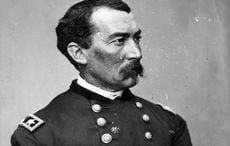As a campaign to remove Donald Trump from the White House trends on Twitter, #25thamendmentnow, we take a look at the Irish American who wrote the law
You will hear a lot about the 25th Amendment to the United States Constitution these times with speculation in some parts that President Donald Trump may be removed from office under its provisions.
It would take the Vice President and over half the cabinet to agree as well as two-thirds of both Houses of Congress, but it could be done if there were clear signs of mental instability or a physically debilitating illness.
In a week when Trump called the Danish leader "nasty" because they refused to sell him the country of Greenland, he said that the people of Israel consider him the "second coming" and he called himself the "chosen one" to take on China the internet erupted with called for use of the 25th Amendment.
George Conway, the husband of counselor to the President Kellyanne Conway, tagged a tweet to his 642,000 followers:
"So, Mr. Vice President, members of the Cabinet, members of Congress, what’s it going to take for you all to acknowledge what you and we all know: that the President of the United States is mentally unstable and unfit to serve?"
This talk has cast light on an amendment which was written in most part by a son of poor Irish immigrants, from Ballinrobe and Foxford, in Mayo.
Read more: Big Tech, not Trump, is the real threat to US democracy
Professor John Feerick is the former Dean of Fordham Law school, a highly respected lawyer who was called on in huge arbitration cases but is best known by far for his pioneering work on the 25th amendment.

John Feerick with President Lyndon Johnson and Congressman Richard Paff at the passage of the 25th amendment ceremony.
Truly, the quietly spoken son of Mayo has done the state some service, though from his Fordham Law School office with its wonderful view of Manhattan, he demurs and deflects the praise.
His book “From Failing Hands: The Story of Presidential Succession” is the core work, so well argued it was nominated for a Pulitzer Prize when it was released.
The book explains in brief that the 25th amendment allows the President to appoint a Vice President whenever that office falls vacant, allows an incapacitated President to step aside temporarily without forfeiting the office and provides a mechanism whereby the Vice President, upon a majority vote of the Cabinet, may declare the President incapacitated and serve as Acting President until he recovers.
Read more: US Ambassador triggers backlash with tweet welcoming VP Mike Pence to Ireland
Readers may think that all seems so obvious, yet as recently as 1963 when President Kennedy was assassinated there was no mechanism to appoint a vice president once Lyndon Johnson stepped up to the presidency.
There was also no mechanism if Kennedy had not been killed, but had been left in a coma and needed to be replaced. The amendment was clearly long overdue.
The amendment has proven vital since it was passed in 1967.
Richard Nixon, with Watergate looming and Vice President Spiro Agnew, forced to resign in an unrelated scandal, chose Gerald Ford under the 25th amendment to become Vice President. Ford later used the amendment when he became president to appoint Nelson Rockefeller as his VP.
The amendment has been used by Ronald Reagan, handing over his powers temporarily to the VP George Bush senior after being shot. It was also used by George W. Bush when he underwent surgery, handing temporary control to VP Dick Cheney.
All in all, it has been used six times since it was passed 50 years ago, a sure indication of how important a piece of legislation it was.
Modest to a fault, Professor Feerick, 80, waves away the credit, but there is no doubt he was at the heart of creating the vital amendment. President Johnson asked him to the signing in the Oval Office, a moment he cherishes deeply, though he just made it after a delayed plane flight.

About the amendment he states:
“The Twenty-fifth Amendment is the product of extensive debate and discussion, in which full account was taken of the history of presidential succession and the many worthy suggestions offered for improvements in the succession framework. The amendment provides an approach to presidential succession which allows for an effective transfer of power in all cases of presidential inability,” Feerick concluded.
Even if he had never written the amendment Feerick would paint a striking picture of an amazing success story for a son of Irish immigrants.
From the poor farmlands of Mayo to the heights of the legal profession in America it has been quite a journey for Feerick and his family.
His mother Mary Boyle arrived from Mayo in 1928, his father John Feerick a year later.
It was not an auspicious time after the stock market crash of October 1929, but the young Irish couple, who met at an Irish dance hall, made the best of it.
I’m sure they never dreamed their son would go on to such amazing heights as Dean of Fordham Law School. There is also the Feerick Center for Social Justice, which works with students, alumni, lawyers, and community volunteers to connect low-income New Yorkers to the legal resources they need and cannot afford.
Low income is something John Feerick understands. His mother cleaned the houses and apartments of the rich after coming to America. His father was a construction worker who toiled on projects such as the Midtown Tunnel in order to provide for his fast-growing family. After serving in World War II he came home to his family in the Bronx and became a bus driver.
Their son made that great leap that Irish immigrant sons often do. Bright as a button, he decided on Fordham Law School and over 60 years later he has never regretted that move.
During his term, he became editor of the Fordham Law School Journal. A controversial student election where the winner resigned and there was no obvious successor piqued his interest in presidential succession races.
One week before the Kennedy assassination in November 1963 Feerick had written a scholarly essay on presidential succession. When Kennedy died and it became apparent there was no provision for a Vice President, Feerick’s article became the focus of legal scholars politicians and public alike. A constitutional minefield had suddenly opened up and action was needed urgently.
The new President, Lyndon Johnson, had known health issues, and the next two people in line for the presidency were 71-year-old John McCormack (the Speaker of the House) and Senate Pro Tempore Carl Hayden, who was 86 years old.
Suddenly the 25-year-old kid from the Bronx found himself advising the American Bar Association as it hurriedly determined what action should be taken on presidential succession.
Later, he was the key advisor to the Senate Judiciary Subcommittee and its chairman, Senator Birch Bayh of Indiana as the 25th Amendment was drafted.
They were very conscious that eight Presidents died in office prior to the 25th Amendment’s ratification on Feb. 10, 1967 – four from illness and four by assassination. Several times constitutional crises had just been averted.
The need to set firm parameters on presidential succession was never greater. Feerick, though a young and untried lawyer, proved more than equal to the task. It was the first of his great contributions to the betterment of society.
His immigrant parents would surely be very proud. As for John Feerick even today his sense of duty is palpable. The old immigrant community values are those he still holds dear: hard work, sharing, giving back. John Feerick has done his share.
Read more: Irish man Keith Byrne continues to fight deportation from US
* Originally published in 2017.




Comments